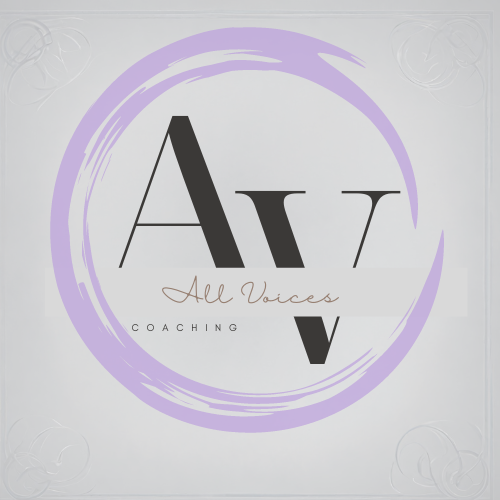
Oct 25, 2025 | Grants & Funding, Human-Centered Planning
(Part Two in the “Funding with Intention” Series)
The most compelling grant proposals aren’t written to impress funders; they’re written to honor communities.
Behind every winning proposal is a story of clarity, alignment, and integrity. When your project plan reflects a genuine understanding of the people you serve, your grant proposal becomes more than a funding request; it becomes an invitation to invest in shared transformation.
This guide will walk you through the core strategies for writing a grant proposal that resonates, rooted in human-centered design and liberation-centered leadership.
Strategy 1: Understand Your Participants’ Real Needs and Priorities
Effective proposals begin where good programs begin, with people.
Before you write a single line, take time to understand the needs, strengths, and aspirations of the community you serve.
Use data from a participant-informed needs assessment, one that intentionally includes the voices and expertise of people with lived experience. If existing assessments don’t reflect that, host a focus group, community conversation, or listening session to ground your understanding in reality rather than assumption.
Then, write a participant profile that describes your community with care and context: demographics, environment, culture, and history. Use strengths-based language, focus on resilience and assets, not deficits.
Finally, craft a problem statement that explains why your organization and project exist. What gap are you filling, and why does it matter? If others serve the same population, clarify what’s distinct about your approach or relationship to the community.
✨ Liberation Lens: Avoid centering scarcity or “saving” language. Instead of proving need, demonstrate partnership and purpose.
Strategy 2: Describe Your Theory of Change
Your theory of change is the story of how your work creates change. It bridges the gap between problem and possibility.
Describe your approach in plain language; what you do, how you do it, and why it works.
Include your service model (for example: home-based case management, center-based programming, or mobile outreach) and the evidence that supports it.
Evidence-based doesn’t mean expensive. You can access free or open-source frameworks through directories like the California Evidence-Based Clearinghouse for Child Welfare. Search for “evidence-based programs for [your cause]” to identify approaches that align with your mission and capacity.
Explain how you’ll adapt that evidence for your community, because liberation-centered programming honors both rigor and relevance.
Strategy 3: Use Local Data Thoughtfully
Local data makes your proposal relatable and real. It helps reviewers see the story unfolding in their own backyard.
Draw from community-level statistics, local reports, or qualitative data (focus groups, interviews, testimonials).
If your program is the first of its kind, use data that illustrates why your approach fills an existing gap.
Then, translate that data into clear, accessible language, no jargon, no acronyms.
🪶 Remember: Your reader might be a volunteer or generalist. Clarity is a form of respect.
Strategy 4: Provide a Clear and Values-Aligned Budget
Budgets tell stories, too. They reveal what we value.
Start with a master budget that includes staffing, operations, and resources. Make sure it reflects your values (fair wages, accessibility, participant wellbeing) as much as your logistics.
From there, create funder-specific versions by adapting the master budget to meet each funder’s priorities and restrictions.
Show how funds will be used to achieve outcomes, not just cover expenses.
💡 Tip: Think of your budget as an equity tool. It’s an opportunity to model transparency and care in how you resource people and projects.
Strategy 5: Create a Logic Model That Actually Makes Sense
Logic models often intimidate new nonprofit leaders, but they don’t have to. Think of them as a snapshot of transformation: how people move from where they are to where they want to be through your program.
Here’s what to include:
- Goals: The broad vision your project supports (rooted in your community’s self-identified needs).
- Objectives: Specific, measurable steps toward those goals.
- Activities: What you’ll actually do — workshops, outreach, services, etc.
- Inputs/Resources: The people, tools, and funding that make it possible.
- Outputs: The tangible results (sessions held, people served, materials produced).
- Outcomes: The meaningful change you aim for (skills gained, systems shifted, lives improved).
- Indicators: How you’ll know it’s working (data points, feedback, or milestones).
🧩 Liberation Lens: A good logic model doesn’t just measure what you do, it measures what matters to the people you serve.
Strategy 6: Build a Master Program Guide
Your Master Program Guide is a living document that ties it all together. It serves as a roadmap for your team, aligning your program’s purpose, process, and funding opportunities.
This guide should:
- Outline how your program connects to your organization’s mission and vision
- Identify overlaps with funder priorities
- Include standardized sections you can easily adapt for each grant application
The result? A resource that saves time, ensures consistency, and strengthens your team’s shared understanding of the work.
Grant Writing Best Practices
To summarize:
1. Plan Ahead:
Give yourself time to think, not just write. Reflection strengthens proposals.
2. Use Data and Evidence Responsibly:
Center stories and statistics equally — both matter in demonstrating impact.
3. Tailor Without Compromising:
Align with funders’ priorities only when they align with your mission. Avoid mission drift disguised as opportunity.
4. Build a Repeatable System:
Create a consistent application checklist and internal review process. This builds confidence, not chaos.
In Closing
The grant proposal is a mirror of your organization’s values, readiness, and relationships.
When you write from a place of clarity and connection, funders see not just a project, but a partnership.
Your next step? Build the internal systems that make your process sustainable. We’ll explore that in Part Three of the series.

Oct 20, 2025 | Grants & Funding, Human-Centered Planning
Basic Grant Writing Steps for New Nonprofit Organizations
You’ve built your nonprofit from the ground up — mission clarified, programs designed, finances mapped out. Now comes one of the most intimidating (and often misunderstood) steps: finding and writing your first grant.
Grant writing isn’t just about persuasion or perfect formatting; it’s about alignment, storytelling, and integrity. When approached with clarity and care, it becomes a practice of resourcing community power rather than chasing dollars.
Let’s walk through a liberatory, accessible approach to grant writing that centers relationships, readiness, and the people you serve.
Understanding the Grant Writing Process
At its core, grant writing is a form of storytelling, but one that must translate community need into institutional language. Funders, whether government agencies, foundations, corporations, or individuals, want to see how your work connects to outcomes that matter to them. Your job is to stay authentic to your mission while building that bridge.
Think of the process less as “applying for money” and more as “inviting partnership.”
The Grant Writing Journey Includes:
- Building your internal system of organization and readiness
- Researching funders that align with your values and programs
- Understanding funder guidelines and funding priorities
- Writing a compelling, evidence-informed proposal
- Submitting with care and following up with the relationship top of mind.
Grant writing takes time, often several months, so plan ahead. You’re not just managing a deadline; you’re cultivating a cycle of trust and opportunity.
Step 1: Build Your Grant Management System
Before you write anything, create an infrastructure that supports you. A grant management system keeps your documents organized and accessible, reducing stress later.
You don’t need fancy software to start; a shared Google Drive or Dropbox folder and a spreadsheet can go a long way.
Include:
- Organizational documents: IRS designation letter, articles of incorporation, board resolution, staff bios/resumes, and current board list
- Financials: Current profit and loss report, balance sheet, board-approved budget, and a program-specific budget for each initiative
- Program materials: Clear project descriptions, outcomes, and community impact statements
Keeping these up to date ensures that when opportunities arise, you’re ready, not scrambling.
Step 2: Identify Funding Opportunities That Fit
The best grants aren’t just available; they’re aligned. Start by identifying funders who share your values and serve similar populations.
- Begin with advocacy networks or associations in your field (e.g., a health-based nonprofit might start with the American Heart Association).
- Visit your local library; many provide free access to the Candid Foundation Directory.
- Explore local community foundations, service clubs (Rotary, Kiwanis), or corporate giving programs at major retailers.
💡 A note on Grants.gov:
Federal grants can be powerful, but they’re often massive in scope and demand extensive capacity. Think of them as graduate-level opportunities, something to pursue once your systems, staffing, and partnerships are solid.
Instead, focus on building collaborative partnerships with organizations already funded through these channels. Being a subgrantee or partner can provide vital experience and credibility while expanding community impact.
Liberatory lesson: You’re not “competing” for crumbs, you’re co-creating abundance. Strategic partnerships expand the pie for everyone.
Step 3: Analyze Each Opportunity for Alignment
Once you’ve found a potential fit, study the funder’s priorities and past grantees. Does this opportunity resonate with your mission?
Create a simple tracking sheet (a spreadsheet works perfectly) that captures:
- Funder name and contact info
- Alignment with your mission
- Grant amount and purpose
- Deadlines and requirements
- Notes on relationships or introductions to make
Don’t just ask, “Can we get this?”, ask, “Should we?” Misalignment drains energy and trust. A smaller, well-fitting grant is worth far more than a large, misaligned one.
Step 4: Write with Heart and Evidence
Your proposal is your story told through data and structure. Funders want to know that your vision is sound, your team is capable, and your community is behind you.
To write a strong, human-centered proposal:
- Lead with your why: What change do you exist to create?
- Ground your case in both data and dignity: Include statistics, but also human stories and context.
- Be specific about outcomes, not just activities: What difference will this make?
- Use accessible, clear language; avoid jargon or inflated promises.
- Show collaboration: Highlight how you work with others, not just for them.
And remember: brevity is a kindness. Funders read hundreds of proposals — clarity stands out.
Step 5: Submit and Follow Up with Intention
Review your proposal thoroughly before submitting; spelling, tone, and alignment all matter. Ask a trusted peer to review it or consider hiring a grant consultant for feedback.
After submission, don’t disappear. Send a brief thank-you note or update the funder on new developments in your work. If you aren’t awarded, ask for feedback — it’s part of your learning process and builds future relationships.
In Closing
Grant writing is a creative and technical skill; it’s a form of storytelling, strategy, and stewardship. By approaching it through a liberation and human-centered lens, you transform it from a transactional process into a relational practice rooted in trust, care, and alignment.
Remember: the goal isn’t just to get funded; it’s to stay rooted in your mission and build partnerships that sustain both your organization and your community over time.

Oct 15, 2025 | Business Planning, Grants & Funding, Human-Centered Planning
(Part of the Funding Liberation Series)
Launching a nonprofit often starts with deep conviction and your own money. Whether you’re covering startup fees, printing materials, paying for licenses, or simply keeping the lights on, most nonprofit founders self-fund their first chapter. It’s a powerful act of belief, but also one that can quickly become unsustainable without structure.
The truth is, funding liberation starts with financial clarity. Managing your early dollars intentionally, even when there aren’t many, is what transforms a dream into a credible, fundable mission.
This guide will help you build a strong financial foundation rooted in transparency, sustainability, and self-preservation, because your mission deserves structure, and so do you.
💡 Step 1: Understand Your True Financial Picture
Before you can manage or grow your organization’s finances, you need to understand where you actually stand.
For nonprofit founders, this means tracking personal investments, organizational expenses, and all cash inflows (even if they come from your own pocket).
Create a simple spreadsheet or use a free cloud-based tool like Google Sheets to start documenting every expense. Include categories like:
- Startup Costs: registration fees, accounting software, website, legal filings
- Program Costs: supplies, outreach materials, stipends
- Administrative Costs: insurance, utilities, or space rentals
✨ Tip: Name your personal contributions in your records as “Founder Investment” rather than “donation.” This helps position you for reimbursement or documentation later when applying for grants or fiscal sponsorship.
If you haven’t yet opened a dedicated business checking account, do it now, even if your budget is small. Keeping your nonprofit’s finances separate from your personal account is a critical early act of legitimacy.
🔍 Step 2: Create a Real Working Budget
You may already have a “grant budget” in your business plan, but now you need a working budget, a living document that captures how money actually moves.
This budget becomes your financial heartbeat. It’s not just for grant readiness, it’s how you’ll manage your capacity, make informed choices, and practice stewardship.
Start with:
- Income: your personal investment, small donations, and any in-kind support.
- Expenses: list every recurring and one-time cost.
- Buffer: plan for at least one “unexpected” line item each month.
If you’re self-funding, this budget is how you protect yourself. It shows you how much you can contribute without jeopardizing your personal stability, a boundary that honors both your mission and your well-being.
🪶 Liberatory leadership means funding your vision without depleting your humanity.
💰 Step 3: Build a Funding-Ready Financial System
Funders don’t just invest in ideas; they invest in readiness. A clear, consistent financial system signals integrity and reliability.
To prepare:
- Track every income and expense (no matter how small).
- Keep digital copies of receipts and invoices.
- Reconcile your account monthly (even if you’re your own bookkeeper).
- Create a simple folder structure for financial documentation: Budgets, Reports, Receipts, Donations, Taxes.
When you begin applying for grants, these records show your organization’s financial story, not just numbers, but evidence of accountability.
🧭 Step 4: Position Yourself for Future Funding
The early days of self-funding can feel lonely, but they’re also your strongest proof of commitment. Funders often want to see that founders have “skin in the game,” but what they really want is a clear record of how you’ve managed what you had.
To position yourself for growth:
- Document every founder contribution as an investment, not just a gift.
- Use your working budget as a foundation for future grant proposals.
- Keep a short, plain-language summary of your financial story: how funds are used, what’s been accomplished, and what additional funding would make possible.
When you apply for your first grant, you’ll already have your narrative:
“Our organization began as a self-funded effort. With early personal investment, we established our foundational program model and basic operations. We’re now seeking external funding to scale sustainably.”
That’s not a deficit story; it’s a story of integrity and stewardship.
📊 Step 5: Manage Cash Flow with Care and Foresight
Cash flow management is one of the hardest parts of early nonprofit life. Even founders with deep community support often face unpredictable timing between donations, reimbursements, or grant awards.
To manage cash flow:
- Forecast your next 3–6 months of expenses.
- Note any periods where your balance may drop below sustainability.
- Create a plan for those periods, scaling back programs temporarily, adjusting vendor contracts, or seeking bridge support.
This is not a failure of leadership; it’s evidence of responsible adaptation.
🤝 Step 6: Seek Partners, Not Patrons
When you begin to look for funding, don’t think of it as “asking for money.” Think of it as inviting others into a shared responsibility.
Funding liberation means shifting from dependency to partnership.
- Apply for fiscal sponsorship to access funding without rushing incorporation.
- Explore micro-grants and seed funds that value community alignment.
- Build relationships with funders who see your expertise, not just your need.
Your early financial systems make these partnerships easier to build because transparency creates trust, and trust attracts resources.
🪶 In Closing: Stewardship as Liberation
Self-funding your nonprofit is an act of faith, but it shouldn’t be an act of sacrifice. The goal of liberation-centered funding is not to prove your worth through struggle; it’s to build systems that sustain you and the work.
Every spreadsheet, every budget, every bank statement is more than paperwork; it’s proof that your vision deserves resourcing, not rescue.
✨ Funding liberation starts with financial clarity and ends with collective care.



